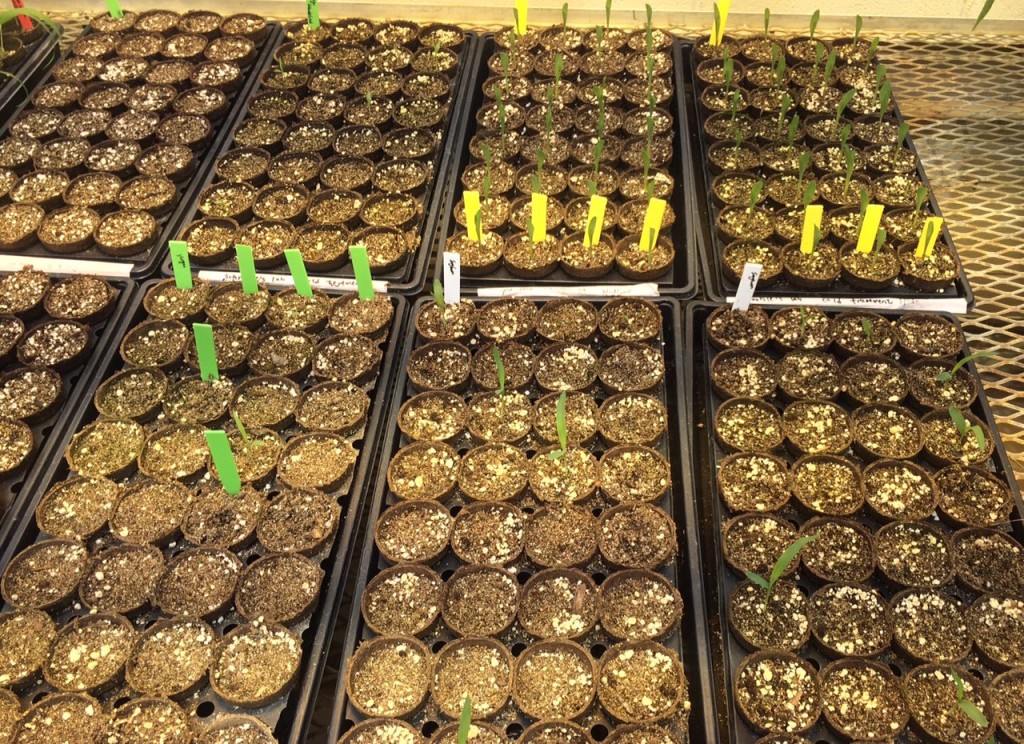Comparative genomics (what I mostly did in grad school) just required a whole bunch of well assembled genome sequences from different species. Comparative gene regulatory studies (one of the things I do now) requires actual living plants. Ideally you can just repurpose datasets which others have already generated and published online, but eventually you hit a wall where the only way to move forward to grow some plants of your own. And not just one or two plants, but trays and trays of them.
Why do we need so many plants to address even simple research questions? Because even with completely identical genomes, grown in carefully controlled environments, different individual plants will grow slightly differently,* and those growth differences will translate into variation the levels at which different genes are expressed. So to make sure we’re actually identify the differences in gene expression that result from [a mutation of a particular transcription factor/differences in growing conditions/different tissues/different species] we need to look at data across lots of individual plants so we can tell which differences have absolutely nothing to do with the thing we are actually trying to study.
All of which is made an awful lot harder when the majority of your seeds are killed by fungus before they even break the surface of the soil!

Each of those little pots should have a happy little corn, sorghum, or setaria plant growing in it. Normally I’d consider >90% good germination and <70% poor germination. This I would call “abysmal.” The corn, (top right) on the other hand seems to be fine.
*Micro-environmental variation, differences in seed size and quality, variation in soil mix, spooky epigenetic “stuff.” Take your pick. I’m inclined to blame it mostly on the first two.